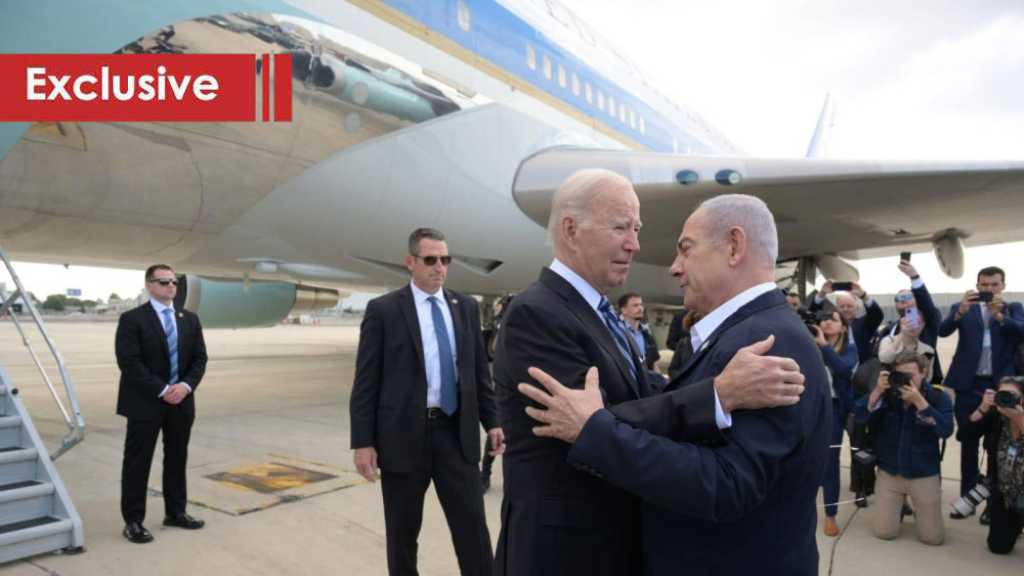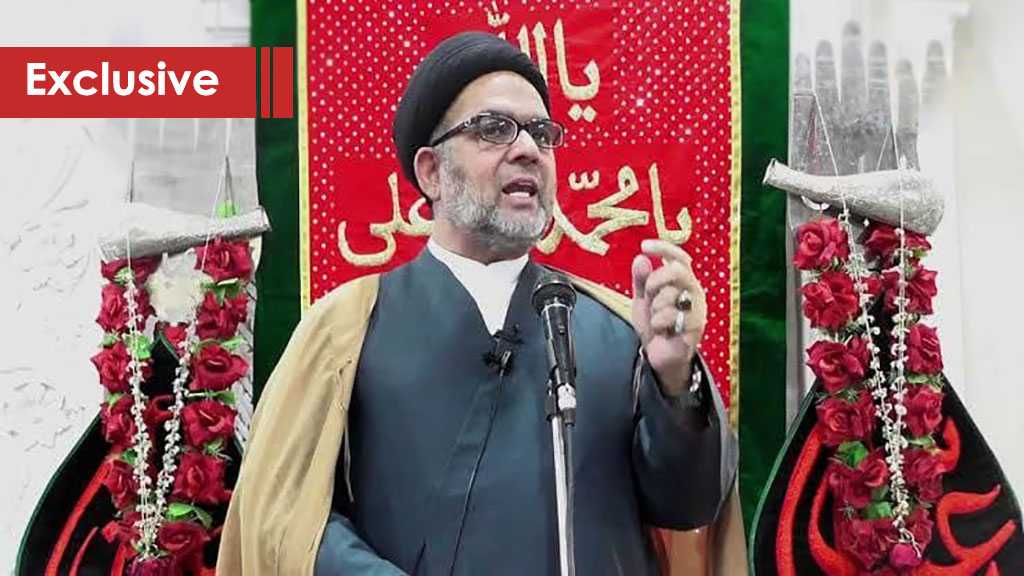
A Yellow Card Surprises Tel Aviv

Jihad Haidar
"Israel" sent a fiery message by targeting a car on Syrian territory that was carrying Hezbollah members. The attack didn’t cause any casualties. It was followed by three "silent" security incidents targeting the border fence with occupied Palestine. The occupation army described the incidents as "very dangerous". What messages was the enemy trying to send, and how did it assess the response along the border fence?
The recent “Israeli” aggression was an extension of its broader policy towards Syria. It is also clear that it falls within the framework of the "battle between the wars", which has carried on for more than seven years. However, the enemy’s strategy has gone through several stages. Each of these was based on gambits and estimates related to the prevailing conditions and centered on objectives set by the enemy's leadership in line with the perceived nature and level of threat.
The aggression also carried another message: amidst the spread of the coronavirus in "Israel", Tel Aviv would continue its aggressive strategy against the parties of the resistance axis in general, and Hezbollah in particular. As such, it wanted to say that any repercussions from the health and economic crisis would not deter “Israel” from confronting what it sees as a threat to its regional interests.
The enemy apparently wanted to suggest that it was prepared to venture into targeting Hezbollah members as well. It deliberately inflated the message in a bid to add more credibility to it, hoping to raise Hezbollah’s anxiety levels and change the existing equation.
Why did the enemy bet again on this particular stage?
The enemy’s calculations regarding Syria date back to the beginning of 2013, and the assumption that neither Damascus nor its allies in the axis of the resistance are willing to open a second front while faced with the Takfiri threat. This premise constituted the main pillar upon which the aggression was founded and continued until the current stage in which a set of factors and considerations overlapped.
Before the spread of the coronavirus, the enemy was wagering on the notion that the strategy of the axis of resistance was not to respond to these strikes as the strategy was based on a specific order of priorities at this stage. It was also because of specific estimates regarding the repercussions of this course that may result from exchanging fiery messages. The same concept was present among the enemy's leadership, forcing it to abide by restrictions in order to avoid a scenario leading to a military confrontation that it does not want, at least at this stage.
After the spread of the virus, this approach strengthened within political and security decision-making institution. They seem to understand that Hezbollah has become more eager to avoid a military confrontation in light of Lebanon’s economic and health challenges. This may prompt them to broaden the level of targeting, in the hope that the worsening economic and health situation, locally and regionally, curbs Hezbollah’s influence and pushes it to accept the formula the enemy is aiming to impose.
Nevertheless, it appears that the enemy has also reached a critical conclusion – admitting that all operational, regional, and economic bets have not succeeded in curbing the upward trajectory of the axis of resistance and that of Hezbollah in particular. This prompted “Israel” to try to advance its operational options or to pave the way for such an advancement.
However, it seemed clear that the enemy was keen to avoid human casualties. This is due to its realization that any foolishness in this area will lead to an inevitable response by Hezbollah. In order to avoid this scenario, it was keen not to inflict casualties.
This is what Ron Ben-Yishai, Yedioth Ahronot’s security affairs commentator, explicitly pointed out.
“It was clear to the decision-makers in ‘Israel’ that the liquidation of a Hezbollah operative and official would cause a major escalation. It was clear that Hezbollah would respond. And this currently goes against ‘Israel’s’ interests," Ben-Yishai said.
The same concept applies to the attack since it was carried out on Syrian soil; based on the equation that developed during the past years in which the Lebanese scene was protected with equations that differ from the regional scene. Otherwise, the enemy could have waited for the car to cross onto Lebanese territory and target it without spilling blood. Thus, the message would be more informative and more severe. It would show more determination from the enemy leadership.
Instead, its eagerness to deliver the message on Syrian soil reflected its concerns about a Hezbollah response. But it seems that the outcome surprised the “Israeli” decision-making establishment. In the absence of martyrs, “Israel” should have been safe from any response. However, the fence incident muddled its calculations, opening possibilities with more than one scenario that is certain to boost “Israeli” anxiety levels.
The border fence infiltration messages
Hezbollah is yet to issue any statements regarding the incident at the border with occupied Palestine. However, several messages from the incident can be noted.
The enemy was not reluctant to link the two events due to their succession, and the fact that the operations of cutting the fence took place along more than one point with creative tactics that revealed a level of professionalism and creativity. The sensors were unable to detect the men who had outmaneuvered all defensive and control measures. This was acknowledged by ‘Israeli’ television Kan, which pointed out that "the entire border line is filled with a lot of control and defense measures, and the fact that these cells reached the fence and cut openings indicate high professionalism in the implementation, and perhaps in the information they gathered in preparation for cutting these openings."
The enemy saw in the series of breaches of the fence an embodiment of the ability to infiltrate the borders, if necessary. This is further highlighted by the ‘‘Israel’ Defense’ website, which pointed out that this is one of the most "technological borders" for "Israel". It gives the resistance – according to Tel Aviv's political and security decision-making institutions – more cards to counter any aggressive options that require this level of response.
The enemy understood from the border incident that this level of aggressive messages in Syria would be matched by appropriate responses. It can be said that most of the commentators and experts who dealt with the border fence incident recognized this equation and reflected its presence as it should be among the enemy’s leaders. Military commentator for Channel 13, Alon Ben-David, was one of those who drew attention to this.
"Whoever reached the fence and cut holes in three places is telling ‘Israel’ I know how to reach the border. You will not see me. And I will cut holes in the fence whenever I want," Ben-David said. "The ‘Israeli’ army observation points did not see Hezbollah members approaching” the fence. Ben-David described this message as very cruel, and therefore, it is likely to be reflected "in the continued operation of the ‘Israeli’ army against Hezbollah, whether in Syria or in Lebanon."
The political and security institutions' characterization of the fence incident as nothing less than "very serious" is an expression of their understanding of the messages. These messages only impose more restrictions on any aggressive options being studied or being prepared for implementation.
According to “Israeli” commentators, the message from the border fence incident was resounding. The time, place, and tactics were significant. They indicate that the price the enemy entity will pay is far higher than what it anticipated in any confrontation or attempt to exploit what it imagines as a new opportunity that will allow it to impose equations by which it expands its aggression.
In simple terms, "Israel" realized that it was dealt a yellow card, which is directed specifically at the decision-makers in Tel Aviv, and it will be subject to further study and assessment.
Whatever the scenarios that follow, the fence incident has turned into a prominent junction in the context of the security war between Hezbollah and the “Israeli” entity which has multiple tracks and arenas and is most sophisticated in terms of methods and tactics. What happened in recent days was nothing but a demonstration of a small part of this. It was done in an accurate manner that will not lead to a military confrontation that the two parties do not want at the present stage, at least.



